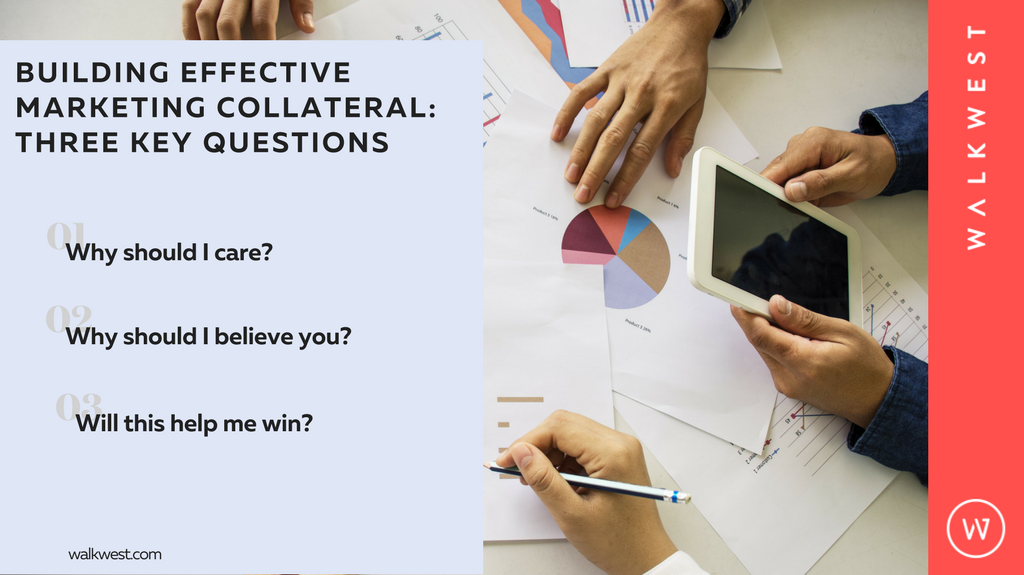Over the past three decades, we have the number of advertisements a consumer is exposed to per day grow from 500 to more than 5,000 per day. How can a company capture a customer’s attention when there are literally thousands of competitors fighting for it? And once that attention is gained, how do you continue to hold it when a human’s average attention span is only 8 seconds? Then ultimately, how does a company take this potential customer and convert them into a buyer?
Obviously, customer needs and types vary vastly depending on the industry. So there is research that must be done to acquire the information specific to your market’s needs. Utilizing focus groups and social interaction software platforms are effective ways to gain insights into your base. Through this research, there are three questions you need to be able to answer for your customer to help mold your marketing collateral:

Why should I care?
Eight seconds is the amount a bull rider has to hold on for dear life and the amount of time you get to make an impression on your consumer. Eight seconds of dedicated attention span is all you have to turn that first glance into legitimate interest. This is where the understanding of your potential customer emotional triggers and pain points become vital.
Through this understanding, you are able to develop headlines or imagery to cause the “eyebrow raise effect.” It’s that moment when a headline or image makes your potential customer think for a just a second that this could be transformative or beneficial for them. Once the “eyebrow raise” is achieved, the answer to “Why should I care?” becomes clear to the customer. They care because your piece of marketing collateral could potentially be beneficial or transformative for them.
Why should I believe you?
Now that you have your customers attention, it’s time to convince them of the benefits that they initially perceived are actually authentic. This is where unbiased product data and market research become very important. This means going beyond the typical benefits and features explanation that typical pieces of marketing collateral show. It’s showing data that is directly relevant in a manner that is easy to understand.
We live in a world where time is precious and skimming has become an art form. So getting relevant information to your customer that is easily consumable is imperative. Knowing your customer’s pain points and displaying data that supports how your product can help in these areas is a great way to begin building trust with your potential customer.
Will this help me win?
If you still have your customers attention, they are likely now evaluating your product at a personal level. They are trying to decide if the benefits you have detailed will apply to them specifically. So, how do you convince them that your product or service will help them achieve success? This is achieved by using images that depict situations that your customers find themselves in and showing how your products help to improve those situations.
It’s all about relatability and emotional connection. You want your customer to feel comfortable in their decision to buy your product. Therefore, know what potential questions your customers may have and answer them before they have to ask. The fewer open questions that your potential customers have, the less they will debate on whether or not your product can be personally useful for them.
The proper utilization of marketing collateral has become more complex as technology and media have advanced, but the building blocks of it have remained simple. The purpose is still to help your company produce sales by leveraging solutions to your customer’s pain points and validating these solutions through data that is relevant to them. Doing competitive research to see how other companies who invest heavily in their marketing collateral are delivering their message can provide great insight into how your company can improve in that area. Ultimately, the most important factor in effective marketing collateral is its ability to connect with your customer from first glance all the way to product purchase.

